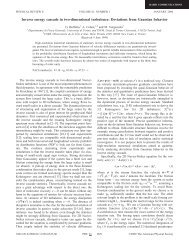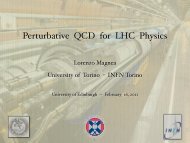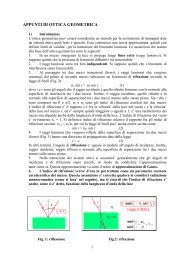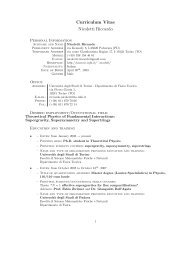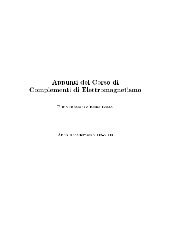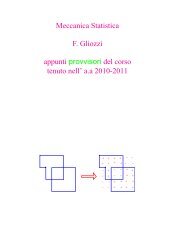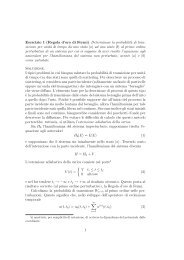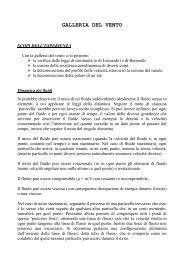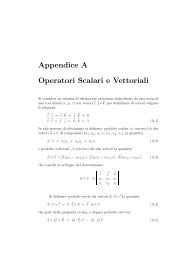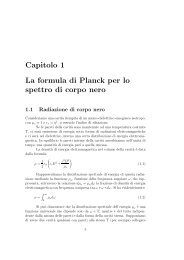Lezioni di Meccanica Quantistica Relativistica A. Bottino e C ... - INFN
Lezioni di Meccanica Quantistica Relativistica A. Bottino e C ... - INFN
Lezioni di Meccanica Quantistica Relativistica A. Bottino e C ... - INFN
Create successful ePaper yourself
Turn your PDF publications into a flip-book with our unique Google optimized e-Paper software.
Analogamente, utilizzando la (D.4) e la (D.3), dalla relazione (D.6) si ottieneγ µ† = (S † S) γ 0 γ µ γ 0 (S † S) −1 .(D.9)Per sod<strong>di</strong>sfare la relazione (D.2), deve essereS † S = 11 .(D.10)Le relazioni (D.8) e (D.10) implicano la relazione <strong>di</strong> unitarietà (D.5). Dalle relazioni(D.3) e (D.5) segue che la matrice S è definita univocamente a meno <strong>di</strong> una fase.Questo è il teorema fondamentale <strong>di</strong> Pauli sulle rappresentazioni delle matrici γ, che siriassume <strong>di</strong>cendo che tutte le rappresentazioni delle matrici <strong>di</strong> Dirac sono unitariamenteequivalenti.In questa Appen<strong>di</strong>ce considereremo le tre rappresentazioni maggiormente utilizzate:la rappresentazione <strong>di</strong> Dirac, quella <strong>di</strong> Majorana e quella chirale.D.1.1Rappresentazione <strong>di</strong> DiracQuesta rappresentazione viene anche chiamata rappresentazione standard ed è utile per<strong>di</strong>scutere il limite non-relativistico dell’equazione <strong>di</strong> Dirac.( )( )11 00 σγD 0 = , γD k 0 −11= k−σ k , (D.11)0γ 5 D =( )0 −11, αD k =−11 0( )0 σkσ k 0, (D.12)( ) 0 σC D = i γD 2 γ0 D = −i α2 D = −i 2σ 2 , (D.13)0σ 0kD( )0 σk= iσ k 0( ), σ ij σD = k0ɛijk0 σ k , (D.14)D.1.2( ) 0 −11γD 0 γ5 D = 11 0Rappresentazione <strong>di</strong> Majorana( ) −σ, γD k γ5 D = k00 σ k . (D.15)Questa rappresentazione rende reale l’equazione <strong>di</strong> Dirac scambiando tra loro αD 2 (l’unicamatrice complessa nella rappresentazione <strong>di</strong> Dirac) e β D . Infatti l’equazione <strong>di</strong> Dirac informa hamiltoniana può essere scritta come( ∂∂t + ⃗α · ⃗∇ + i β m)ψ = 0 ,(D.16)da cui si vede che l’equazione <strong>di</strong> Dirac è reale se le α k sono reali e β è immaginaria.91




